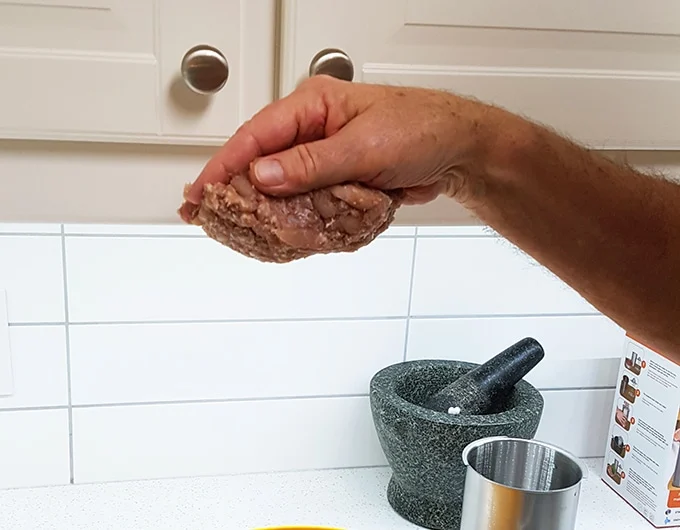
Dec . 05, 2024 20:12 Back to list
Vacuum Bowl Cutter Manufacturing Facility for Efficient Food Processing Solutions
The Evolution and Importance of Vacuum Bowl Cutters in Food Processing
In the realm of modern food processing, the vacuum bowl cutter has emerged as an essential piece of equipment, revolutionizing how food products are prepared. Its design and functionality have evolved over the years, becoming a critical asset in factories that focus on producing high-quality food items, particularly in the meat and bakery industries. This article explores the significance of vacuum bowl cutters, their working principles, and their impact on food production.
Understanding Vacuum Bowl Cutters
A vacuum bowl cutter is a specialized food processing machine used primarily for chopping, mixing, and emulsifying food products. This equipment features a large bowl that rotates while an attached cutting blade processes the ingredients. The term vacuum refers to the machine's ability to remove air from the bowl, creating a controlled environment for the food preparation process.
The primary purpose of incorporating a vacuum system is to minimize oxidation during processing. Oxidation can significantly degrade the quality of food products, affecting texture, color, flavor, and nutritional value. By using a vacuum bowl cutter, food manufacturers can ensure better preservation of these essential qualities while improving the overall shelf life of the products.
The Working Mechanism
The process begins with loading raw ingredients—such as meat, vegetables, or dough—into the vacuum bowl cutter. Once the lid is sealed and the vacuum function is activated, the machine removes air from the bowl, creating a low-pressure environment. This setting not only helps retain the freshness of the ingredients but also reduces the risk of bacterial growth during processing.
As the bowl rotates, the sharp blades cut and mix the ingredients with precision. The cutter’s adjustable speed allows for customization based on the desired consistency, whether fine, medium, or coarse. The heat generated by the friction of the blades can also aid in emulsifying certain mixtures, like mayonnaise or dressings, leading to a smoother and more stable end product.
vacuum bowl cutter factory

Quality and Efficiency
The vacuum bowl cutter is designed to enhance both the quality and efficiency of food production. Traditional chopping methods can introduce air into the mixture, leading to oxidation and deterioration of flavor and color. However, vacuum processing eliminates this issue, resulting in vibrant, flavorful products that appeal to consumers.
Moreover, these machines are built for high-volume production, making them indispensable in food factories. Their ability to process large batches of ingredients quickly allows manufacturers to meet increasing market demands without compromising on quality. This efficiency is particularly beneficial in today’s fast-paced food industry, where time is of the essence.
Versatility Across Industries
One of the standout features of vacuum bowl cutters is their versatility. While commonly used in meat processing to prepare products like sausage fillings and pâtés, they are equally effective in baking operations for producing doughs and batters. Additionally, they can be employed in the production of vegetarian and vegan alternatives, providing a wide range of applications across various food sectors.
As consumer preferences shift towards healthier and more natural products, vacuum bowl cutters also facilitate the use of fewer preservatives and additives. The ability to maintain the quality of fresh ingredients without resorting to artificial preservatives makes these machines a favorable choice for health-conscious brands.
Conclusion
In summary, the vacuum bowl cutter represents a significant advancement in food processing technology. Its ability to promote quality, enhance efficiency, and maintain the integrity of ingredients has made it a staple in food factories worldwide. As the industry continues to evolve, the importance of such equipment will only grow, ensuring that manufacturers can consistently deliver high-quality products that meet consumer expectations. Whether in the production of traditional meats, innovative plant-based foods, or artisanal bakery items, the vacuum bowl cutter stands as a testament to the dynamic interplay between technology and culinary craftsmanship.
Latest news
-
NextGen Equipment Series-IndustrialTech Solutions|Smart Automation&Real-Time Analytics
NewsJul.12,2025
-
Smart Irrigation System - Example Corp | Water Conservation, AI-Driven Efficiency
NewsJul.12,2025
-
Chicken breast meat slicer
NewsMar.07,2025
-
Meat Bowl cutter for LAB
NewsMar.07,2025
-
Linking gearbox and holding device
NewsMar.07,2025
-
Sausage clipper machine
NewsMar.07,2025